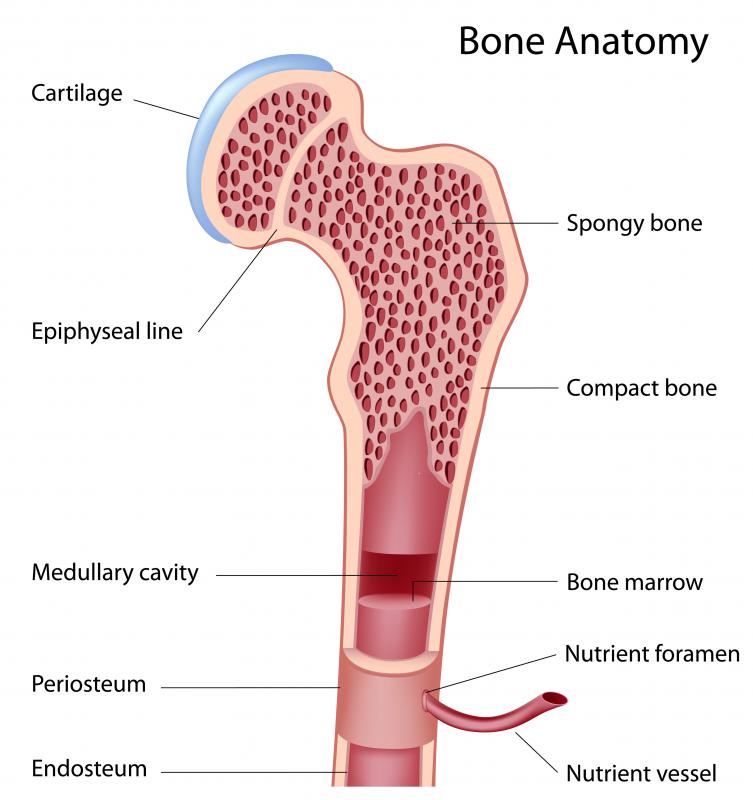At WiseGEEK, we're committed to delivering accurate, trustworthy information. Our expert-authored content is rigorously fact-checked and sourced from credible authorities. Discover how we uphold the highest standards in providing you with reliable knowledge.
What is Involved in Red Blood Cell Production?
In humans, red blood cell production occurs almost exclusively in the marrow of bones. Stem cells located in the marrow generate blood cells, both red and white, and release them into the bloodstream. Red blood cells, also called erythrocytes, do not have a nucleus and are unable to divide the way other cells do.
At about four to five weeks past gestation, the human embryo begins to develop blood. These young embryos do not have bone marrow to create blood in so it is created by stem cells in the yolk sac. As the internal organs develop, red blood cell production moves to the liver. This occurs at between nine and 12 weeks. In the middle of the second trimester, this process moves to the bone marrow for the duration of the person’s life.
Children are able to produce blood cells in the marrow of nearly all of their bones. As a person ages, some of the bones stop making red blood cells. The femur, for example, stops making red blood cells in the mid to late twenties.

Hematopoietic stem cells are responsible for producing red blood cells. These stem cells have the ability to form precursor cells for any type of blood cell. Once the precursor cell is fully formed, however, it will only create a specific type of blood cell. The stem cells used to create red blood cells exist for the duration of a person’s life. While it is possible to kill off stem cells through radiation or injury, they are capable of self-replicating as well as creating new blood cells.

A red blood cell dies after about 120 days. Over the course of their lifespan, the cell membrane deteriorates, making damage to the cell likely. They are unable to make repairs, so damaged cells are removed from the body through the liver or spleen. Some of the components of the cells are recycled, while other components are eliminated as waste products.

With a relatively short lifespan, red blood cell production must be continued on a daily basis. It takes about a week for red blood cells to mature in the marrow. Usually, the body produces and destroys about 200,000,000,000 red blood cells each day. Production will increase if the oxygen levels in the blood are too low and decrease if the oxygen level is high. Enzymes released by the kidneys instruct the marrow to increase or decrease red blood cell production.
AS FEATURED ON:
AS FEATURED ON:



















Discuss this Article
Post your comments